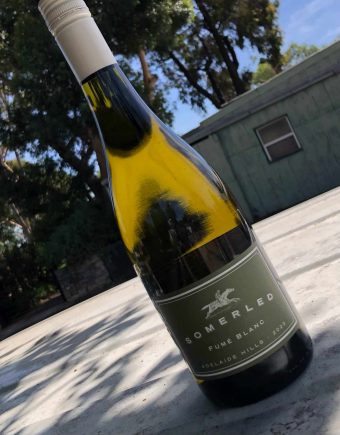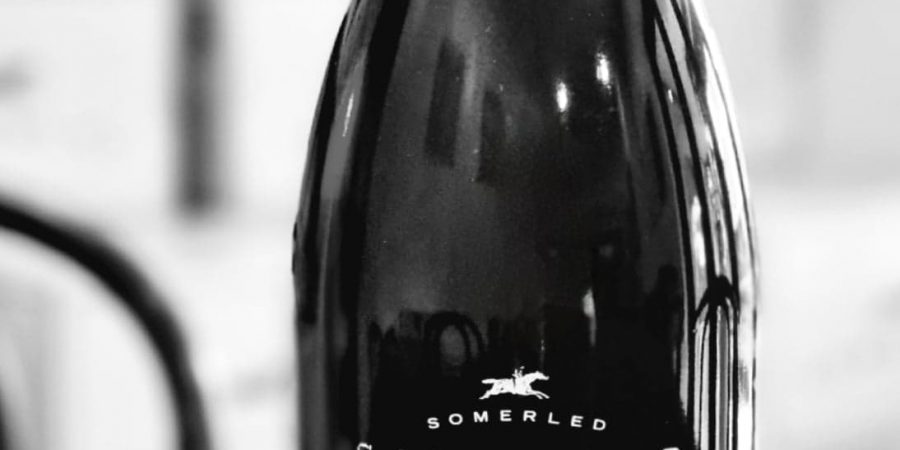 We’re getting organised to send our 2023 Pinot Noir down the bottling line.
We’re getting organised to send our 2023 Pinot Noir down the bottling line.
It will be safely tucked away in bottle in just under a month from now.
In the meantime, we’ve been thinking about giving that bottle a new look.
Just like we did with the Fumé Blanc recently, we’ve decided to move from the printed bottle to paper labels (there is so much more regulatory stuff we need to fit on labels these days, so it makes sense for us to do that).
Keep an eye out for the new look when it hits the shelves later in the year.
(but before then, keep in mind that we’re down to our last few cartons of 2022 Pinot – so make sure you head over to our website and grab some before it’s all gone!)
All this label talk got me thinking about other ways to put all those important words and pictures (and make a memorable first impression, convey brand identity, and enhance the overall consumer experience – apparently!) on a wine bottle.
I did some research and it turns out there are lots.
Let me count (and explain) the ways…
1. Paper Labels
Traditional Paper Labels
Paper labels are the most common and versatile method for labelling wine bottles. They can be printed with various finishes, including matte, gloss, and satin, and are available in different textures and weights. Paper labels are ideal for showcasing detailed designs, information, and branding. They can be applied with adhesive or, in some cases, be part of a wrap-around design.
Textured Paper Labels
Textured paper labels offer an added tactile element, with finishes that mimic textures like linen or parchment. These labels can add a touch of sophistication and can enhance the perceived value of the wine.
2. Shrink Sleeves
Heat-Shrink Sleeves
Shrink sleeves are made from heat-sensitive plastic that shrinks to fit the bottle when heated. This method provides a 360-degree label that wraps around the entire bottle, offering ample space for intricate designs and vibrant colours. Shrink sleeves are also tamper-evident, making them a popular choice for consumer safety.
Stretch Sleeves
Stretch sleeves are another variant, made from elastic materials that stretch over the bottle and conform to its shape. This method is flexible and can accommodate different bottle shapes and sizes.
3. Glass Printing
Direct-to-Glass Printing
Direct-to-glass printing involves applying the label design directly onto the glass surface of the bottle. This technique creates a sleek, modern look and is ideal for clear or frosted glass bottles. It eliminates the need for separate labels and allows for precise, durable designs.
Ceramic Printing
Ceramic printing is used for high-temperature printing directly onto ceramic-coated bottles, providing a robust and permanent solution. This method is commonly used for specialty or premium wines and offers a distinctive appearance.
4. Glass Etching
Sandblasting
Glass etching with sandblasting involves using abrasive sand to etch designs into the glass surface. This technique creates a frosted, textured appearance that adds a touch of elegance and sophistication. Sandblasted designs are durable and resistant to wear.
Laser Etching
Laser etching uses lasers to create precise and detailed engravings on the glass surface. This method allows for intricate designs and fine text, offering a high level of customisation and a premium feel.
5. Foil Labels
Metallic Foil Labels
Foil labels use metallic foils, such as gold or silver, applied through a stamping process. These labels add a touch of luxury and can create a striking visual effect with their shiny, reflective surfaces.
Holographic Foil Labels
Holographic foil labels use holographic materials that change colour and shimmer with light. This method adds a dynamic and eye-catching element to the bottle, making it stand out on the shelf.
6. Embossed and Debossed Labels
Embossed Labels
Embossing involves raising parts of the label design to create a three-dimensional effect. This technique adds texture and depth, making certain elements stand out and enhancing the tactile experience.
Debossed Labels
Debossing creates a sunken effect by pressing the design into the label material. This method provides a subtle, sophisticated look and can be combined with other printing techniques for added impact.
7. Writable and Interactive Labels
Writable Labels
Writable labels have a special coating that allows consumers to write directly on the label with a pen or marker. This feature is perfect for personalized gifts or custom orders, adding a personal touch.
Interactive Elements
Interactive labels incorporate features like QR codes or augmented reality (AR). QR codes can provide additional information about the wine, while AR can offer an immersive experience, such as virtual tours or interactive content.
8. Natural and Sustainable Labels
Wooden Labels
Wooden labels are made from thin slices of wood and provide a rustic, artisanal touch. They are often used for premium or limited-edition wines and can be engraved or printed with designs.
Recycled Materials
Labels made from recycled paper or other sustainable materials reflect an eco-friendly approach. These labels can be stylish and environmentally responsible, appealing to consumers who prioritize sustainability.
9. Fabric Labels
Cloth Labels
Cloth labels, made from materials like linen or cotton, offer a tactile and premium feel. These labels can be stitched or adhered to the bottle and are often used for special occasions or high-end wines.
Canvas Labels
Canvas labels provide a rugged or artisanal appearance, suitable for wines that emphasize craftsmanship. These labels can be printed or hand-painted with custom designs, adding a unique touch.
10. Specialty Coatings and Finishes
Glossy and Matte Finishes
Glossy finishes reflect light and enhance colours, making them vibrant and eye-catching. Matte finishes offer a more subdued look with a soft texture, conveying elegance and sophistication.
Textured Coatings
Textured coatings, such as soft-touch or tactile finishes, add a unique sensory element to the label. These coatings can simulate textures like leather or fabric, creating a memorable experience.
Who knew there were so many ways to do pretty much the same thing?!
Luckily for us, we like to keep things simple. And classy. And clean. And let Rob’s wines do the talking!
